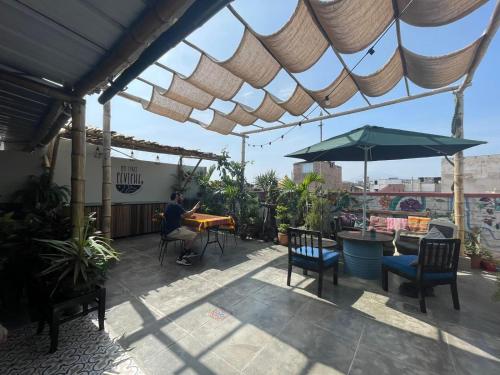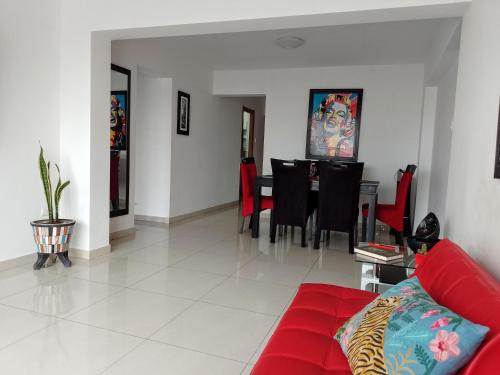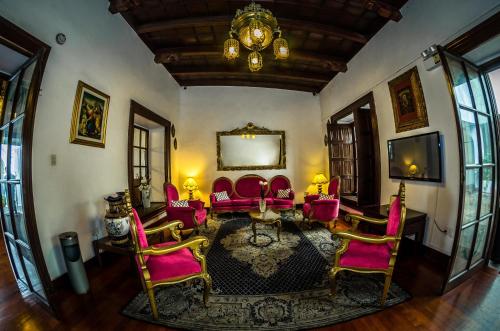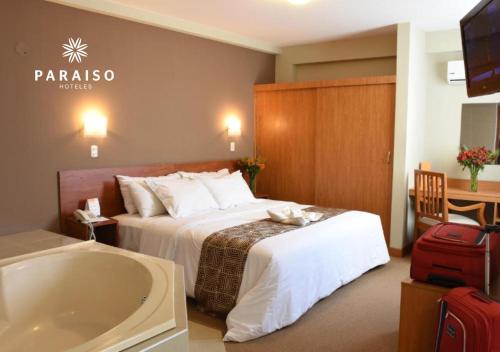“People will not look forward to posterity, who never look backward to their ancestors.”
Irish philosopher, Edmund Burke, 1790
I arrive in the city of Trujillo, in the northern part of Peru, early in the morning as the sun is just getting ready to come up. The long bus trips through the country are actually quite comfortable but they always seem designed to leave and arrive at the most inconvenient times.
Rather than turn up at my guesthouse while the owner is still asleep, I decide to spend a couple of hours at the bus station and wait until a more appropriate time to make my unannounced breakfast arrival. I always consider it a bad strategy to annoy accommodation providers within seconds of meeting them.
And so I take the time to read a little about Trujillo and what there is to see and do. It seems using my time to learn a bit more is a good decision because I make an important discovery. And it’s one that will turn out to have bigger ramifications than I realise.
The main reason I’m here is to see the archaeological site of Chan Chan and you might like to read my story about that.
But, with my research, I realise there’s also another very important site here called Huaca del Sol y la Luna – The Temples of the Sun and the Moon, in English.
The site is also known as the Huacas del Moche, named after the Moche culture that built them.
The Moche culture
The Moche was a culture that lived in northern Peru from about 100 – 800AD. They were an agricultural society with sophisticated methods of irrigation, hunting and fishing.
What is Huaca del Sol y la Luna?
Huaca del Sol y la Luna are two temples – the Temple of the Sun and the Temple of the Moon – just outside Trujillo in Peru. They were the religious and ceremonial centre of the Moche culture, which lived around Trujillo from about 100 – 800 AD. The temples were built out of adobe bricks and each would’ve been about 50 metres high.
What is the significance of Huaca del Sol y la Luna?
Huaca del Sol y la Luna are significant because they contain a wealth of knowledge about the Moche culture, which was extremely powerful in northern Peru. Huaca de la Luna, in particular, has incredible murals that offer an insight into the history of the ancient civilisation.
What was the religion of the Moche culture?
The Moche religion was similar to many other South American civilisations of the time. The Moche believed in many different gods that often blended human and animal characteristics. The most powerful god was Si, who represented the moon. But other deities came in the form of a jaguar or a giant spider, for instance.
What does huaca mean?
These days, we tend to translate ‘huaca’ to mean temple. But, in the Quechuan languages of Peru, it’s a bit more complicated. A huaca means an object that is used to revere something. So, while it could be a religious monument complex like the Huaca del Sol y la Luna, it could also be a natural location like a mountain.
As far as archaeologists can tell, the Moche were also relatively peaceful with no major conflicts with other cultures of the time. Yet they met their demise after just 700 years when they should have been reaching their zenith.
So what happened? Well, there are no definite answers but the most accepted theory by scholars is something that should send a chill down our spines today. Climate change.
Scientific research, based on ice cores drilled from glaciers in the Andes, shows that this part of Peru was hit by a super El Niño in the 6th century that produced 30 years of flooding. That was followed by 30 years of drought.
For a society that relied so heavily on agriculture, this rocked the very foundations of the Moche culture. But it was more than just a natural disaster that brought them undone – and this is where we should be particularly worried about the lessons for our time.
Researchers believe it was actually the response to this turbulent period that brought everything crashing down. Religion was seen as a way of controlling the weather – through human sacrifices and ritual prayers, for example – and when these no longer worked, the people lost faith.
The religious and political side of society was suddenly being questioned and the leaders’ insistence that they could fix the problem was proved to be false. Just imagine the chaos when human after human was murdered on an altar but their blood just brought more grief.
Meanwhile, the people were starving… for decades.
There is some archaeological evidence that fortifications were built within the Moche land after this time but there was still no threat from outside apparently. The theory is that people turned on each other.
With resources scarce and the community desperate, a form of civil war broke out to take and defend important assets like irrigation channels and prime farming land. Ultimately, though, it brought down life as they all knew it.
I probably don’t need to spell out the similarities with the challenges we face on the planet today. Although it was obviously a very different time technologically back then, human nature has changed very little over the centuries.
The fear is that we are doomed to repeat history and as the natural world changes around us, and we realise our leaders are powerless to stop it, our first instinct will be to turn on each other in a fight for our own survival. And ultimately that will mean the demise of our society.
Huacas del Moche
But, anyway, that’s enough pessimism for right now. I want to quickly tell you a bit about the Huacas del Moche site because it is a fascinating place. It’s actually made up of two pyramids that face each other – Huaca del Sol (Temple of the Sun) and Huaca de la Luna (Temple of the Moon).
Huaca del Sol
Huaca del Sol is basically a ruin these days and is inaccessible for visitors. But you can still see it well from the outside. It was made with 130 million adobe bricks and was the largest structure of its kind in the Americas at about 50 metres high.
Although it’s now only about a third of its original total size, it’s still 40 metres high and is impressive enough to look at from a distance.
Huaca de la Luna, on the other hand, is smaller but in much better condition. It was also built with adobe bricks and you can see that clearly when you go inside.
Huaca de la Luna
From a distance, though, it looks like a solid and foreboding structure. That was probably the aim, though, because it was used more for religious and ceremonial activities than its counterpart.
The highlight of the Huaca de la Luna pyramid is the friezes that cover some of the walls. The largest example is on (what is now) an exterior wall and this carved and painted mural gives an insight into the culture here. It really is enormous, as you can see in this photo.
Smaller murals inside the pyramid are also remarkably well preserved and show you a bit about the fluid religion of nature spirits that takes some influence from the Chavin culture.
You can walk through different levels of the structure to see these and other features, like the area where people were tied up and tortured before being sacrificed!!
My feeling is that Huacas del Moche is not the kind of site you would come all the way to Trujillo to see – but Chan Chan is and so this is definitely somewhere to add on while you’re here.
But, more importantly, if the Huaca del Sol y la Luna makes more of us think about the culture that built these great pyramids and why they disappeared so long ago… well, the lessons from that are probably the most critical part of any visit.
Where is Huaca del Sol y la Luna?
Huaca del Sol y la Luna is about six kilometres from the centre of Trujillo in northern Peru. The official address is Carretera Campiña de Moche, Moche 13600, Peru. You can see it on a map here.
How do you get to Huaca del Sol y la Luna?
The easiest way to get to Huaca del Sol y la Luna is probably by taxi, which should cost about 10 sols. There is also a combi from the centre of town, which costs about 3 sols per person. Or you could walk from the centre of Trujillo within about an hour.
When is Huaca del Sol y la Luna open?
Huaca del Sol y la Luna is open Tuesday to Sunday from 09:00 – 16:00. Although you can explore the inside of Huaca de la Luna, you’ll only be able to see Huaca del Sol from the outside.
How much does it cost to visit Huaca del Sol y la Luna?
An entry ticket for Huaca del Sol y la Luna is 10 sols (US$2.65). To visit the museum on site is an extra 5 sols.
You’ll get a lot more out of the visit if you have a guide to explain everything. I would recommend this guided tour of Huaca del Sol y la Luna.
There are also some tours that will included Chan Chan. I would suggest this good budget option, and then there’s also this full day tour.
THE BEST ACCOMMODATION IN TRUJILLO
The centre of Trujillo has a good selection of places to stay because of the big tourist sights nearby.
BACKPACKER

Along with comfortable beds, there’s a lovely social vibe at Yaqta Hostel, especially on the rooftop terrace.
APARTMENT

The colourful design and the lovely balcony make this apartment a great choice if you want your own space.
BOUTIQUE

A blend of modern and colonial styles, Gran Bolivar Hotel has a good central location and free breakfast.
LUXURY

Large rooms and an outdoor terrace make Hoteles Paraiso one of the nicest options in town, plus it includes a free breakfast.
Wow – I was there three years ago and can hardly believe how much better the site looks since then. It was a fascinating place for sure, and I was particularly impressed by the fact that these civilizations existed LONG before the Incas, yet we tend to think of Peru in terms only of the Inca civilization.
We were here a few months ago and I agree it’s such an interesting spot. It really gives you the chance to take a step back and ponder the history. The land around it is still so barren – it’s easy to imagine how they starved.
Great post!
Wow. That’s an interesting read. And the intricacies of the site is pretty amazing.
Although sometimes TV makes us think the future will be bleak, I decide to be an optimist and hope for a bright future for humanity.
Amazing culture, but wow, what a parallel for today about climate change! Very interesting post.
Wow, this is a really solid post Michael. Good informative writing. I’m in Colombia now but I can’t wait to get to Peru!